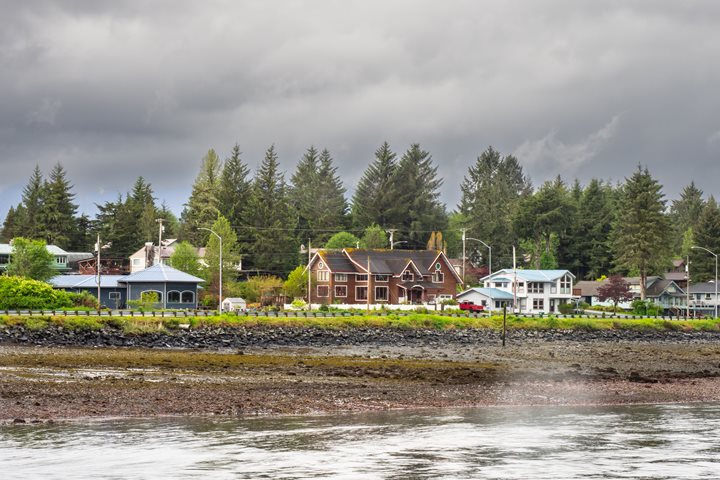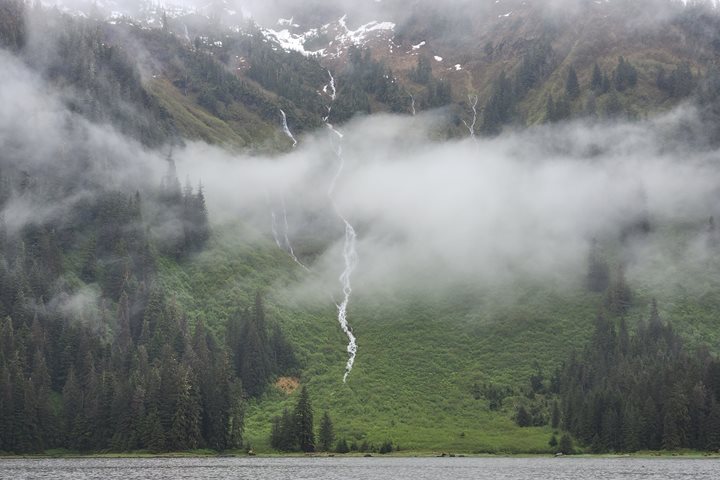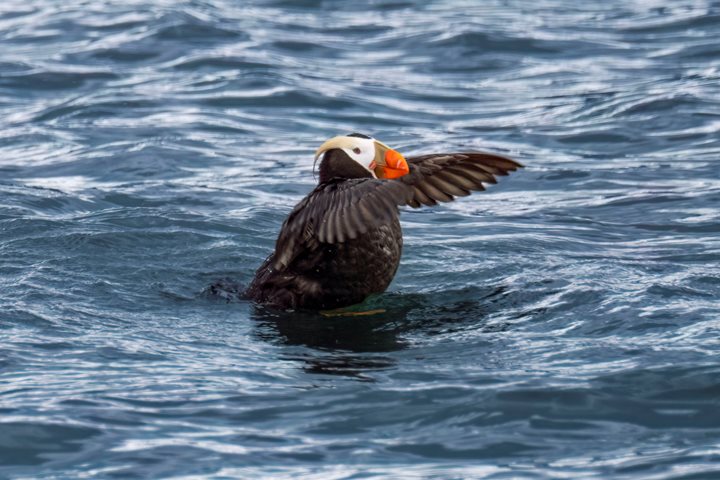We were awoken by the soothing voice of our Expedition Leader, John Mitchell, over the ship’s intercom early this morning to announce that a single humpback whale could be seen breaching in front of the ship. The National Geographic Sea Lion maneuvered close to shore within Stephen’s Passage and many of us got to see some of the multiple breaches and pectoral flipper slapping that the whale performed.
After breakfast, we maneuvered into Endicott Arm, which is a glacially-carved fjord cut into the mainland of southeast Alaska. The presence of icebergs floating in the fjord indicated that an active tidewater glacier must be nearby. The clear blue color of many of the icebergs made them look like precious gemstones and some icebergs even appeared to have been sculpted by the hand of an expert ice-carver. As we cruised up the fjord, a large brown bear was seen in the tall sedges above the high tide line, occasionally poking its furry head up to look around.
Afterword, the National Geographic Sea Lion maneuvered carefully through the floating ice toward Dawes Glacier, stopping briefly to admire the scenery at a narrow passage called Ford’s Terror. We arrived at a high slack tide, where water is not going out or coming in, and the characteristic whitewater rapids that occur at Ford’s Terror were not to be seen; instead, two small vessels passed through the narrow passage with ease. Sheer granitic cliffs towered above us that were polished and scraped by glacial activity during the Ice Age, which ended only about 10,000 years ago.
Amazingly, the high clouds cleared as we reached the upper part of Endicott Arm. Under blue skies and sunny weather, expedition landing crafts were launched that allowed us to reach the fjord’s upper reaches and be nearly face-to-face with Dawes Glacier, where all of us were able to observe several above water or underwater calving episodes. As we approached to within a quarter mile of the 250-foot high face of this massive tidewater glacier, we were impressed by the deep crevasses and blue ice. Dawes Glacier has retreated and thinned dramatically, with over two and a half miles of retreat in the last 70 years. Harbor seals on ice floes and in the water curiously watched our every move while harbor porpoises and arctic terns were also nearly.
In the evening, after the guest slide show, we began cruising down Endicott Arm and came across a black bear on the shore just as dinner was served. The week of adventures in southeast Alaska was coming to an all-too-soon end. It seemed fitting that a fabulous Alaskan sunset greeted us as we exited Endicott Arm toward Juneau, and darkness slowly dimmed the Inside Passage. We all reflected on the wonderful adventures we had this past week in this great land.









